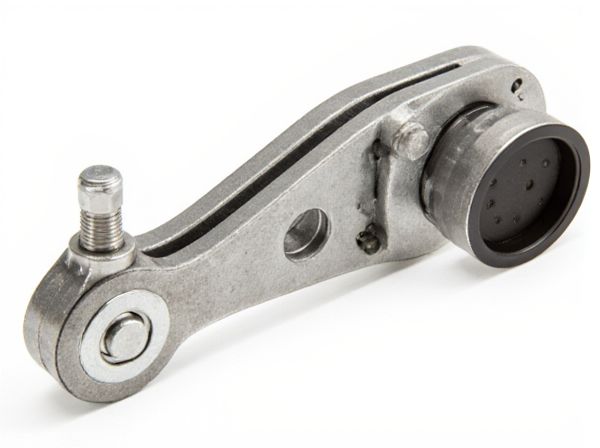
Photo illustration: Manual Tensioner vs Hydraulic Tensioner
Manual tensioners require you to adjust the tension by hand, offering simplicity and lower cost but demanding regular checks and maintenance. Hydraulic tensioners automatically maintain optimal tension using fluid pressure, providing consistent performance and reduced wear on components. Choosing the right tensioner depends on your need for convenience, precision, and maintenance frequency.
Table of Comparison
| Feature | Manual Tensioner | Hydraulic Tensioner |
|---|---|---|
| Operation | Manually adjusted to maintain timing belt tension | Automatically adjusts tension using hydraulic pressure |
| Maintenance | Requires periodic manual adjustment | Low maintenance, self-adjusting |
| Durability | Durable but prone to tension loss over time | Longer lasting due to consistent tension |
| Installation | Simple, less expensive to install | More complex and costly installation |
| Performance | May cause uneven timing belt wear if not adjusted correctly | Provides optimal tension, enhancing timing belt lifespan |
| Common Use | Older and budget-friendly vehicles | Modern, high-performance engines |
Introduction to Belt Tensioners
Belt tensioners maintain optimal tension in engine belts to prevent slipping and extend component life, with manual and hydraulic types serving distinct functions. Manual tensioners rely on mechanical adjustment to set belt tension, requiring periodic maintenance to ensure proper function. Hydraulic tensioners use a fluid-filled damper to automatically adjust tension, providing consistent force and reducing wear under variable operating conditions.
Manual Tensioner: Overview and Function
Manual tensioners provide precise control over belt or chain tension through manual adjustment, ensuring optimal performance in engine timing systems and machinery. They feature a simple design with adjustable screws or levers, allowing users to fine-tune tension based on specific requirements without relying on hydraulic pressure. These tensioners are ideal for applications where consistent tension maintenance is critical, offering reliability and ease of maintenance compared to hydraulic alternatives.
Hydraulic Tensioner: Overview and Function
Hydraulic tensioners utilize pressurized fluid to maintain consistent tension on timing belts or chains, adapting automatically to engine load variations and thermal expansion. This self-adjusting mechanism reduces maintenance needs and improves engine performance by preventing slack and ensuring optimal timing. Compared to manual tensioners, hydraulic tensioners enhance durability and reliability in modern automotive engines.
Key Differences Between Manual and Hydraulic Tensioners
Manual tensioners rely on physical adjustment to maintain belt tension, requiring regular inspection and manual tightening to prevent slippage or wear. Hydraulic tensioners use pressurized fluid to automatically adjust tension, offering consistent performance and reduced maintenance. Key differences include manual tensioners' simpler design and lower cost versus hydraulic tensioners' superior adaptability and longer service life in high-demand applications.
Performance Comparison: Manual vs Hydraulic
Manual tensioners require periodic adjustment, which can lead to inconsistent tension and increased wear over time, whereas hydraulic tensioners automatically maintain optimal belt tension, enhancing durability and reducing maintenance intervals. Hydraulic tensioners provide smoother damping and better compensation for thermal expansion, resulting in quieter operation and improved engine performance. Manual tensioners are generally less expensive but lack the precision and reliability under varying operating conditions that hydraulic tensioners offer.
Installation Process: Manual vs Hydraulic Tensioners
Manual tensioners require precise manual adjustment during installation, involving the use of hand tools to set the correct belt tension and secure the tensioner in place. Hydraulic tensioners simplify the installation process by automatically adjusting tension through internal fluid pressure, reducing the need for manual tuning and minimizing installation errors. The ease of installation with hydraulic tensioners makes them preferable in applications demanding consistent tension without frequent adjustments.
Maintenance Requirements and Longevity
Manual tensioners require regular manual adjustment to maintain proper belt tension, which increases maintenance frequency and labor costs. Hydraulic tensioners self-adjust using fluid pressure, reducing the need for routine interventions and extending service intervals. The increased precision of hydraulic tensioners typically results in longer component lifespan and improved overall engine reliability.
Application Suitability: Which Tensioner Fits Your Needs?
Manual tensioners offer precise control and are ideal for applications requiring regular adjustments or where system complexity must be minimized. Hydraulic tensioners provide consistent, automatic tension and suit high-load environments like heavy machinery or automotive engines needing continuous tension maintenance. Selecting the right tensioner depends on factors such as load type, maintenance frequency, and operational environment.
Cost Analysis: Initial Investment and Long-Term Value
Manual tensioners generally incur a lower initial investment compared to hydraulic tensioners, making them cost-effective for budget-conscious projects. Hydraulic tensioners, while more expensive upfront, offer superior durability and reduced maintenance costs, providing better long-term value in demanding applications. Evaluating total cost of ownership reveals that hydraulic tensioners can lead to significant savings over time due to enhanced operational efficiency and fewer service interruptions.
Conclusion: Choosing the Right Tensioner for Your System
Manual tensioners offer precise, user-controlled adjustment ideal for applications requiring regular maintenance and fine-tuning, while hydraulic tensioners provide consistent automatic tensioning, reducing the need for frequent adjustments in high-load or variable conditions. Selecting the right tensioner depends on system requirements such as load variability, maintenance frequency, and operational environment, where manual tensioners excel in simplicity and cost-effectiveness, and hydraulic tensioners deliver performance stability and reduced downtime. Evaluating factors like system complexity, budget constraints, and desired maintenance intervals ensures optimizing tensioner choice for durability and efficient operation.
 caratoz.com
caratoz.com